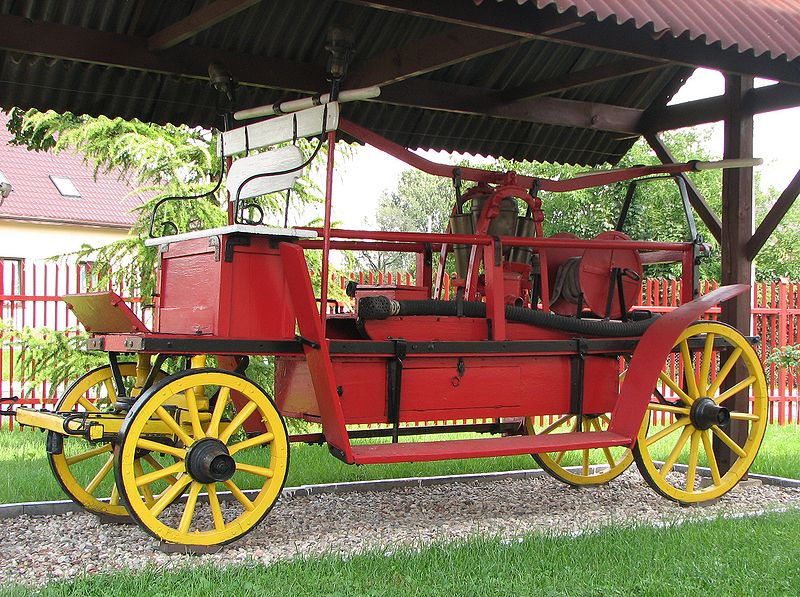
 |
 |
Photos courtesy of Brosen and Stefan Lindström.
By Frank R. Myers
Technological advances have brought us much more sophisticated firefighting apparatus and emergency medical service (EMS) equipment. In turn, this requires state-of-the-art systems to make sure everything is working right. Achieving accountability through standard operating guidelines (SOGs) will help ensure that nothing is missed. So, how do you make sure your SOGs are up to snuff?
Since we are now entrenched in the technology era, old ways of repairing and fixing things “on the fly” may work in some circumstances, but less often. Ever since we began integrating more electronics into our apparatus, switching in/switching out electronic components is the order of the day—especially when tracking down problems in “multiplex” systems. Optimistically, we hope to have these complex electronic parts available in our repair facilities. If not, we are dead in the water and need to change out. Hopefully, the vehicle will still be drivable.
Even though we can get great “diagnostic” information from today’s on-board systems, the time to catch it is during the morning inspection. Drivers need to be intimately familiar with the ins and outs of what their displays are telling them; if an alert pops up, it needs to be reported immediately to ensure full functionality of the apparatus.
Not only are fire apparatus becoming more complex, but the equipment we carry in some circumstances such as EMS and hazmat has moved to a more technology-based operating system(s). Advanced patient diagnostic equipment has seen many changes—not only for treatment, but the way we transmit the information to the corresponding healthcare facilities.
Atmospheric monitoring equipment, hazmat meters, and so on have all become better and more complex. The way we get information has changed from printed material to electronic media. The days of paper handwritten reporting have pretty much diminished. Tablets/smartphones have become the standard. For most departments, EMS personnel have adopted patient reporting on tablets. A tap on a screen addresses such important information as drug references, protocols, algorithms, and silhouettes of the Vitruvian man/woman/child to pinpoint where injuries are located. As we make entries of our treatments, the narratives are automatically generated and, therefore, are less likely to have misspellings and ensure that treatments match up with protocols. The result is more accuracy and less chance for fault-finding and, consequently, liability.
In fact, what technology has done is given “life” back to the officers in charge on emergency units. The days of the handwritten report, to be entered later on a desktop computer back in the office/station, have virtually disappeared. We now send out the report by a tablet/long-term evolution once the alarm response has ended and we return to quarters or service. There is also a legible report at the emergency room/healthcare facility for triage or transfer of care.
Most everything these days has become digitized. Thank goodness for “batteries”! As these advancements occur and the rate information changes, we must update, edit, and/or change the SOGs rapidly (with proper confirmation from those making the decisions). We cannot wait for a new “policy” to be printed and have it inserted into our manuals. Being able to send out the necessary changes and update it across the board so everyone is up to speed is occurring in a more expedient fashion.
Since systems have become more complex, affecting everything across the board, so has the way that we need to check them. More detailed information must be added to the checklists. Because of this, we need to ensure that nothing is missed! No longer can we depend on handwritten entries. We need accountability and a streamlined way of reporting any issue that arises. We also need to change the checklists or SOGs as new equipment/gear is changed or updated when it is different than what we previously used.
There is no doubt that technology is changing at a rapid pace. The fire service has been traditionally slower in advancements, but times are changing, and it is catching up to the point that we are becoming more technology-based. In fact, we are now immersed in it.
Frank R. Myers is a lieutenant (Ret.) with the Miami (FL) Fire Rescue (MFR), where he served 32 years. Before his retirement, he served at the MFR’s training center for six years as the driver-engineer instructor. Myers now serves as a senior advisor for PSTrax.com, a software platform that helps fire departments streamline and automate their apparatus, equipment, and narcotics programs. Myers can be reached at Frmyers@bellsouth.net.


